Spectacular pyramids and ruthless pharaohs: The rise and fall of Egypt's Old Kingdom
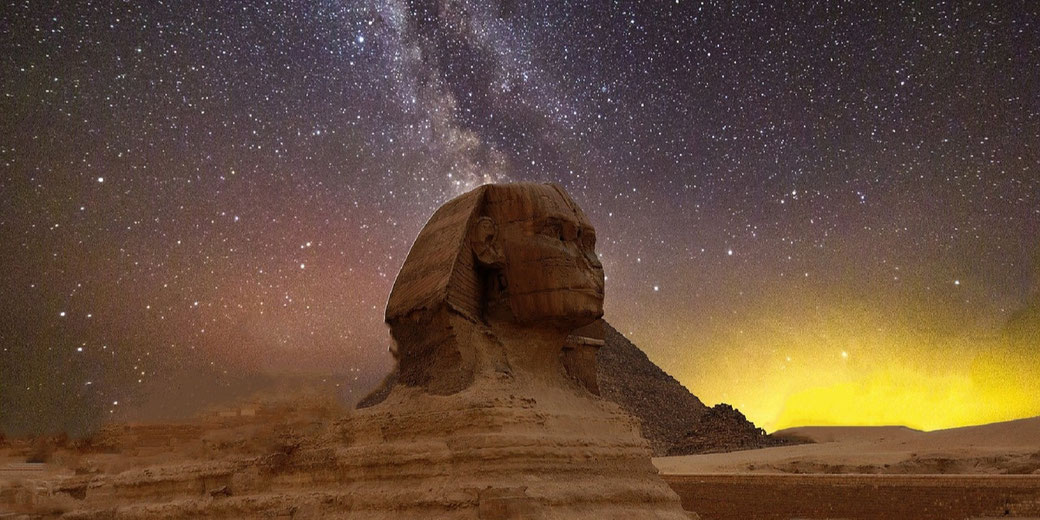
The Old Kingdom period of ancient Egyptian history lasted from c. 2686 to c. 2181 BC and is often referred to as the 'Pyramid Age'.
At its peak, the Old Kingdom saw impressive advancements in architectural constructions, extensive royal power, and a flourishing Egyptian culture.
During this 500-year period, Egypt's society also became highly stratified, with the pharaoh wielding absolute power over a kingdom of peasant workers.
However, as generations pharaohs used their power and wealth to build progressively larger tombs for themselves, it ultimately sowed the seeds of their own destruction.
Before the Old Kingdom: The Early Dynastic Period
Around 3100 BC, the first dynasty of Egypt was founded by King Narmer (who is also called Menes), which is traditionally considered the start of Early Dynastic period Egyptian history.
After he unified the country through military conquest, Narmer established Memphis as the capital city, as it was strategically located at the apex of the Nile Delta region in the north of the country.
This city would remain as the administrative center of ancient Egypt during the Old Kingdom period.
Following Narmer's time in power, the next few pharaohs oversaw the gradual reorganisation of Egyptian society and created a centralised government in Memphis.
As a result, by the start of the Old Kingdom, Egypt's social structure was highly stratified, with the pharaoh at the top, followed by nobles, priests, scribes, and a large population of farmers and laborers below them.
Also, at this time, the country's independent states were known as nomes (districts) directly under the authority of a centralized government at Memphis.
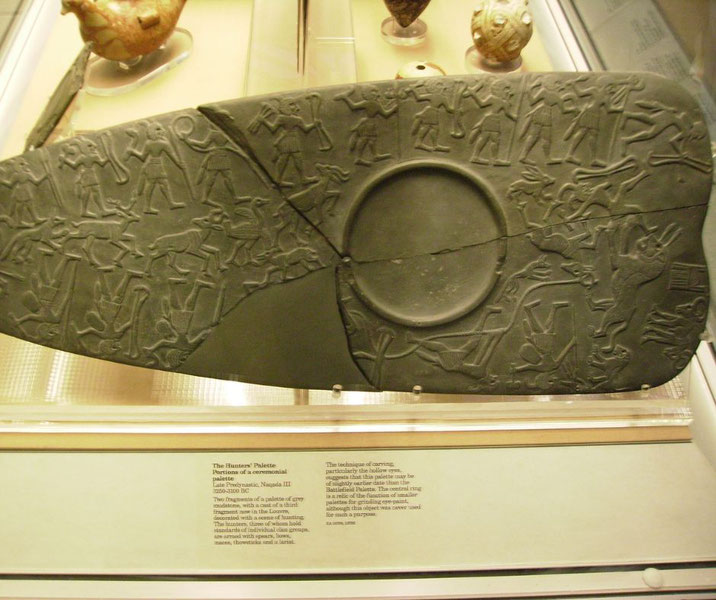
The pyramid builders
The Old Kingdom period began with the dawn of the Third Dynasty of pharaohs, the first of which was Djoser, who ruled from around 2670 to 2650.
Djoser is best known as the first king who experimented with pyramid building for his tomb.
Previous kings had themselves buried in structures called mastabas. A mastaba was a flat-roofed, rectangular tomb that was dug into the ground.
They included rooms that were meant to represent a house and included storage areas for items to be stored for the afterlife.
These mastabas were typically made out of mudbricks, which were not very durable, as they eroded over long periods of time.
So, instead, Djoser wanted a burial structure that was more permanent and impressive than the old mastaba design.
To achieve this, he commissioned his architect, Imhotep, to explore new ways of tomb building.
As a result, Imhotep designed a stone structure that began as a single mastaba, but then placed another mastaba on top of it, which was slightly smaller.
Then he continued to place additional stone mastabas of gradually smaller size on top of each one until he created a 'stepped' pyramid design.
Djoser's Step Pyramid was a revolution in tomb building and something that later pharaohs would be keen to copy.
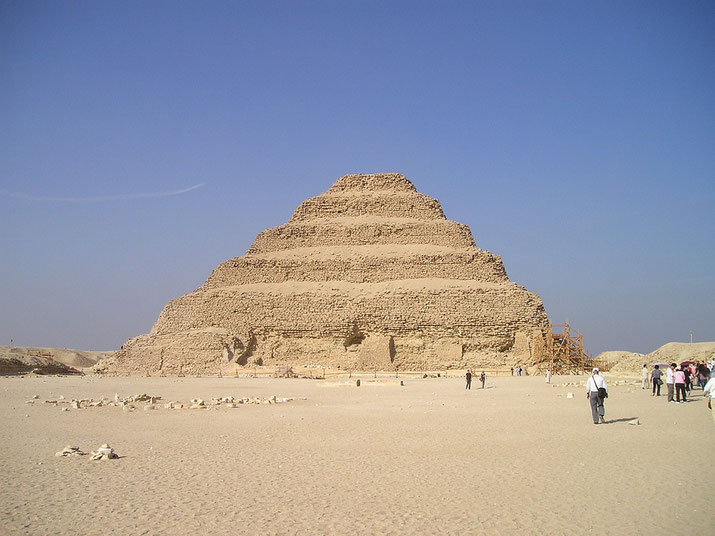
By the start of the fourth dynasty, pharaohs wanted similar tombs and commissioned their own architects to out-do Imhotep's original design.
The pharaoh Sneferu (c. 2613-2589 BC), the first pharaoh of the Fourth Dynasty, had three different attempts at a pyramid before he finally created something that worked.
His first attempt was at Meidum, where he built a stepped pyramid like Djoser, but added smooth limestone sides to create the first 'true' pyramid.
However, it appears that the incline of the sides was too steep and cracks in the structure may have meant that the project was abandoned.
Next, Sneferu attempted a second at Dahshur near modern Cairo. It has become known as the Bent Pyramid because the builders began with sides rising at a 55-degree angle before it changes to a 43-degree slope halfway up.
Modern historians believe that the incline again was again too steep, so they had to change while the project was in process.
Sneferu appeared to have recognized that the main problem was the steep sides, and moved on to build his third pyramid.
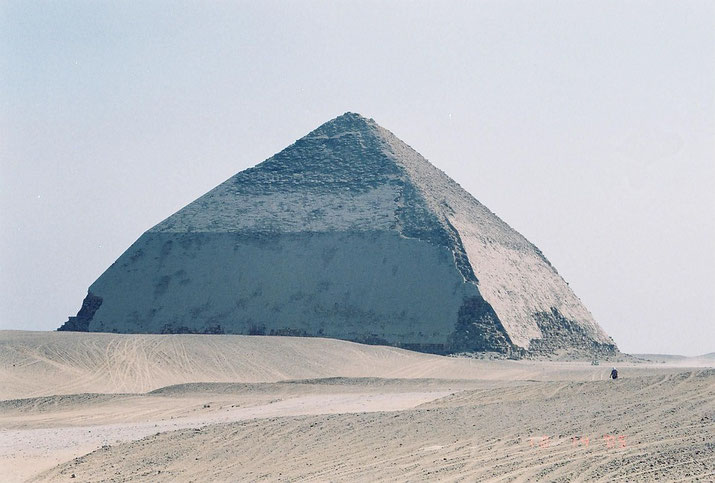
Sneferu's final attempt was a success. Today, it is called the Red Pyramid and is also located at Dahshur.
It gets its name from the red limestone used in its creation and it would be the third largest pyramid in Egypt.
Importantly, it was the first ever successful smooth-sided pyramid: a design which we consider to be a 'true pyramid' shape today.
The Great Pyramid
The next pharaoh after Sneferu, was called Khufu, who probably was his son.
Khufu would build the most famous pyramid of all, the Great Pyramid at Giza.
His pyramid, which was built around 2560 BC, would be the largest ever built at around 150 metres high, and is also the oldest of the Seven Wonders of the Ancient World.
The Great Pyramid is made up of about two million limestone blocks, each weighing an average of two tons.
While some ancient writers claimed that it was built by slaves, archaeological evidence suggests that an estimated 20,000 to 30,000 workers was gathered to work on the project.
These workers were probably paid in grain by the pharaoh, which was rationed out according to how much work they did.
The workers lived in a well-organized workers' village known as the 'Giza Workers' Village', which provided housing, food, and medical care.
The people were organised into smaller teams, or 'working gangs', that were overseen by foremen, with each given its own task, such as hauling stone or mixing mortar.
Over time, Khufu developed a reputation for being a cruel and tyrannical ruler, as recorded by the Greek historian Herodotus.
It was said that he had his workers killed when they became too weak to work or when they made mistakes.
However, it is worth noting that the story about Khufu's tyranny and his murdering of workers is a claim that comes from later Greek sources and is not supported by archaeological evidence from his time.
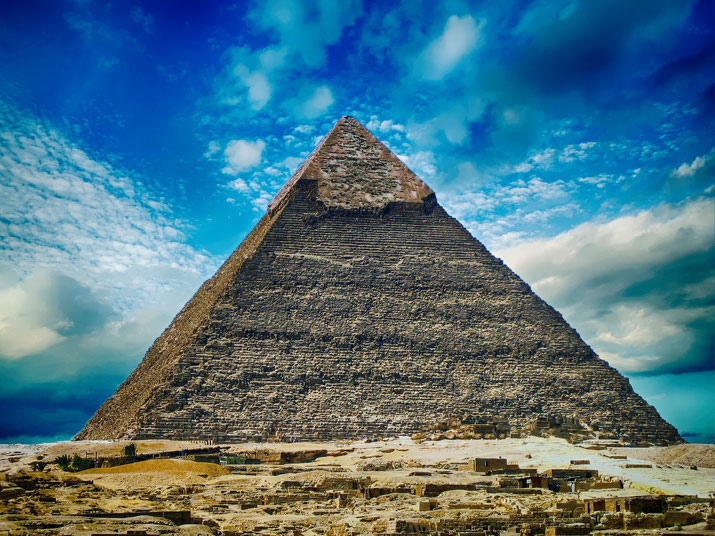
The Great Pyramid was not the only thing Khufu built during his reign. He also commissioned the construction of a temple complex known as the Khufu Valley Temple, which was located next to the pyramid.
This complex eventually included several smaller pyramids, temples, storage rooms, as well as an administrative center.
But why did the pharaohs spend so much time and money building these vast pyramid tombs?
Firstly, they were designed to protect their mummified bodies so they could survive into the afterlife.
This is why they were located on the west side of the River Nile River. The western horizon is where the sun set every day.
As a result, the symbol of the setting sun was associated with the realm of the dead in ancient Egyptian belief.
Therefore, the location of the pyramids to the west provided the pharaoh a 'house' for their bodies and souls for eternity.
This is why the pharaohs were also buried with a range of expensive burial items, so that they would have everything they needed in the afterlife.
Today, there are two other pyramids at Giza, built close to Khufu's. They are both smaller in size.
One was built by pharaoh Khafre, Khufu's son, while the other was built by pharaoh Menkaure, Khufu's grandson.
Unfortunately, the kings' investment of a great deal of wealth in their construction projects put a significant financial strain on their kingdoms.
In the later Fifth and Sixth Dynasties, pharaohs gradually avoided such lavish structures, as they did not have enough money or resources to complete them.
Instead, they built smaller and less grandiose pyramids in comparison to earlier ones.
While evidence from this time period is limited, it seems that there may have been social unrest in Egypt, which meant that they had to invest their resources on administering the kingdom, rather than on construction projects.
The importance of the god Ra
During the Old Kingdom period of ancient Egyptian history, the sun-god Ra was one of the most important deities in the Egyptian pantheon.
Ra was believed to be the creator of the universe and the source of all life. In particular, the Fifth Dynasty (c. 2494–2345 BC) saw the increasing prominence of Ra.
Pharaohs such as Userkaf, who ruled from c. 2494 to 2487 BC, built sun temples dedicated to Ra at Abu Gurab.
However, one of the most significant examples of the importance of Ra during the Old Kingdom was the creation of the Pyramid Texts which first appeared during the Fifth Dynasty and were inscribed on the walls of the royal pyramids.
These inscriptions contain many references to Ra as the supreme deity and describe the pharaoh as a manifestation of Ra on earth.
The Pyramid Texts were thought to ensure the pharaoh's safe journey to the afterlife, where they would be united with Ra himself.
Another example of the importance of Ra during the Old Kingdom is the temple complex at Heliopolis.
This complex included the Great Temple of Ra, which was a massive structure that housed the god's cult status and served as a center for worship and ritual activity.
It also included smaller temples and shrines dedicated to other deities associated with Ra.
Why did the Old Kingdom of Egypt collapse?
The Old Kingdom period finally came to an end around 2181 BC owing to a number of factors including drought, famine, social unrest, and economic pressures.
One theory suggests that there had been a sudden environmental change an that the Sahara Desert was expanding.
This would have led to a decline in agricultural productivity, which would have had a knock-on effect on the economy.
The last of the great pharaohs of the Sixth Dynasty was Pepi II. He reported reigned for about 90 years, according to some of the ancient Egyptian historians themselves.
However, modern historians do not believe this to be plausible and suggest that he probably reigned for around 64 years, which is still an incredibly long reign.
However, following his death, Egypt fell into a period of dramatic instability.
A series of low Nile inundations cause poor crop yields, which triggered a famine throughout the land.
After the end of the Sixth Dynasty, different provincial governors fought with each other to take power.
As a result, a period of intense military conflict began, and the centralised control of Egypt broke down.
The Old Kingdom was over, and a time of political upheaval and economic decline began, known as the First Intermediate Period began.
It was last from around 2181 BC to 2055 BC.
What do you need help with?
Download ready-to-use digital learning resources
Copyright © History Skills 2014-2025.
Contact via email
With the exception of links to external sites, some historical sources and extracts from specific publications, all content on this website is copyrighted by History Skills. This content may not be copied, republished or redistributed without written permission from the website creator. Please use the Contact page to obtain relevant permission.





